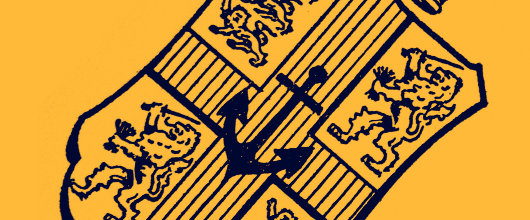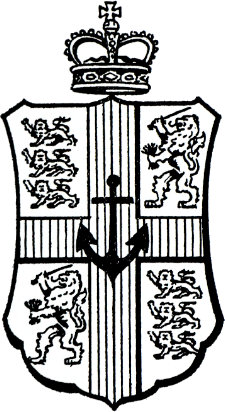
About Andrew Cusack
 Writer, web designer, etc.; born in New York; educated in Argentina, Scotland, and South Africa; now based in London.
Writer, web designer, etc.; born in New York; educated in Argentina, Scotland, and South Africa; now based in London. read more
News
Blogs
Reviews & Periodicals
Arts & Design
World
France
Mitteleuropa
Knickerbockers
Argentina
The Levant
Africa
Cape of Good Hope
Netherlands
Scandinavia
Québec
India
Muscovy
Germany
Academica
The Principality of South Africa
“… or some such thing.”

History has shown that good ideas often come from the humblest of sources. One such example, though regrettably one of a suggestion not put into practice, was a proposal submitted by D. M. Perceval, the humble clerk of the Advisory Council of the Cape of Good Hope colony in 1827 to his higher-ups in the Colonial Office in London. Perceval wrote to request an official seal for the British colony at the end of Africa, but he went a step further with his fairly normal request, extraordinarily suggesting that “the opportunity might be taken to erect [the Cape of Good Hope] into the Principality of South Africa, or some such thing, for the present name is really too absurd for the whole country.”
The title “Prince of South Africa” would have been part of the British Crown, and presumably available as a courtesy title for offspring, just as the eldest son is often (such as now) created Prince of Wales. Would the second son then be “Prince of South Africa”, or would the title stay with the Sovereign? “By the grace of God, King of Great Britain & Ireland, Emperor of India, Prince of South Africa, &c.” It does have a nice ring to it.
 Intriguing though Mr. Perceval’s proposal was, it unfortunately fell on deaf ears at the Colonial Office, where they had many other things to worry about at the time. Besides, unbeknownst to the clerk, a seal for the colony was already on its way, but had not arrived by the time he put pen to paper. The Cape clerk did, however, include in his letter to London an attractive design for a coat of arms for his posited principality (see right).
Intriguing though Mr. Perceval’s proposal was, it unfortunately fell on deaf ears at the Colonial Office, where they had many other things to worry about at the time. Besides, unbeknownst to the clerk, a seal for the colony was already on its way, but had not arrived by the time he put pen to paper. The Cape clerk did, however, include in his letter to London an attractive design for a coat of arms for his posited principality (see right).
The Lion of the Netherlands and the Three Lions of England would be quartered on a Cross of St. George, charged with an anchor — the symbol of hope, and thus of the Cape of Good Hope. Cornelis Pama, sometime member of the State Heraldry Council of South Africa and among the foremost heraldists these southerly climes have produced, was fond of the design, calling them “a very handsome and appropriate coat-of-arms”.
The Cross of St. George, however, is an over-used device in heraldry, and I wonder if a green cross (which I have elsewhere proposed as a “Cross of St. Nicholas”) might be better suited to the Cape. England, after all, is already represented in the arms by the three lions, and a green cross could balance the English and Dutch aspects of the design with something that is neither.
The official seal Mr. Perceval lacked finally arrived in Africa bearing the name Colony of the Cape of Good Hope rather than his preferred Principality of South Africa. “Whatever the disadvantages of the name of ‘Cape of Good Hope’ for a territory that stretched far into the interior of Africa,” Mr. Pama writes, “it was evident that it was to continue under this name for many years to come”.
Search
Instagram: @andcusack
Click here for my Instagram photos.Most Recent Posts
- Faithful Shepherd of the Falklands April 8, 2025
- Articles of Note: 8 April 2025 April 8, 2025
- Proportionality Destroys Representation April 8, 2025
- Sag Harbor Cinema March 26, 2025
- Teutonic Takeover March 10, 2025
Most Recent Comments
Book Wishlist
Monthly Archives
Categories



In addition to the principality idea, I wonder what would have happened if the British had planted peerages in their colonies . . . if they had made the enterprising upstarts peers such as as Marquis of New York or the Duke of Auckland. Would a more aristocratic, traditionalist spirit have developed in the Anglophone world? Would Anglophone republicanism have succeeded less?
Nice blog . . . I like the arrangement, too.
Since 1640 the presumptive heir of Portuguese throne had the title of Prince of Brazil.